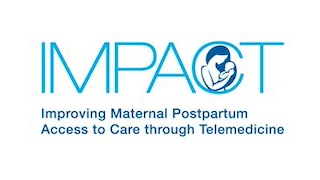IMPACT on Community
The United States faces a maternal health crisis. In 2021, more than 1,200 women died from pregnancy-related complications. Women of color and women of lower socioeconomic status are at greater risk of complications, which include bleeding, high blood pressure, heart disease, infection, and challenges with mental health.
The IMPACT study can help us better understand how best to combat this crisis and overcome barriers to care.
How It Works
Patients who have recently delivered a baby at Parkland Memorial Hospital in Dallas, Texas, and at Grady Memorial Hospital in Atlanta, Georgia, are eligible to participate in the study. Participants will be asked to complete surveys and medical screenings such as blood pressure and blood sugar tests to record their health status and experience after giving birth.
The study will be conducted in two phases. The initial phase will collect baseline information and ensure patient input; the second phase will compare two care models:
- An intensive education model with ongoing virtual education and communication via remote messaging (“push” notifications)
- A telehealth model
The study will measure the effects of “push” notifications in contrast to the “pull” approach of telehealth visits.
Women who have delivered a baby as well as those women’s family members, community members, providers, and insurance companies were asked to help design this study by providing input on which types of study questions, outcome measurements, and interventions would yield the most useful information on how to best care for women after giving birth.
UT Southwestern has engaged city council leaders in order to understand how to ensure reliable internet access is available for participants and how findings from the IMPACT study could apply to improve care in other settings.
Who Can Use Results From This Study and How
The data from this study will help us understand how to identify and treat postpartum problems and will help providers identify best practices for educating and caring for patients after childbirth. This information can help patients, their families, health care providers, communities, and insurance providers determine the best ways to provide and receive postpartum health care.
























